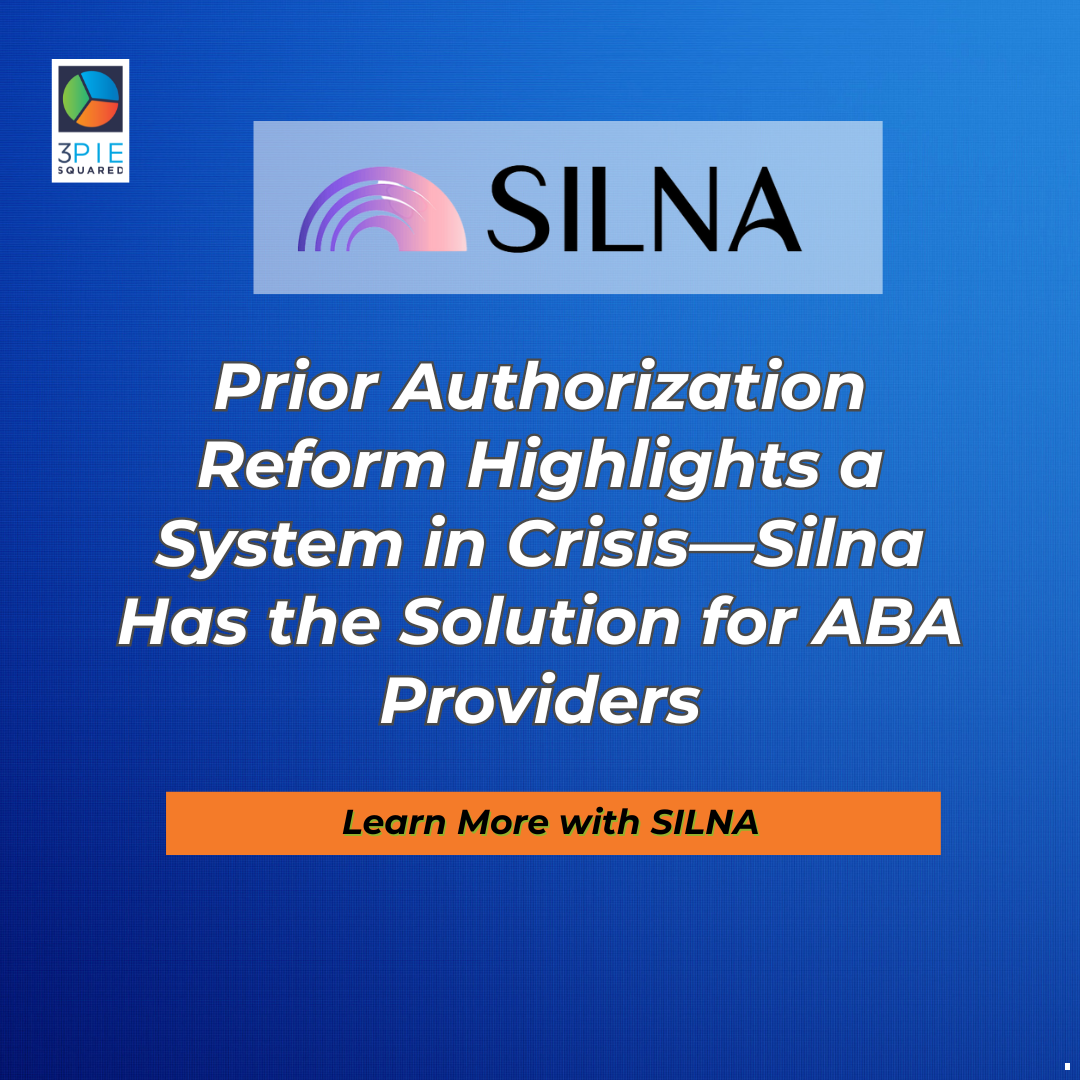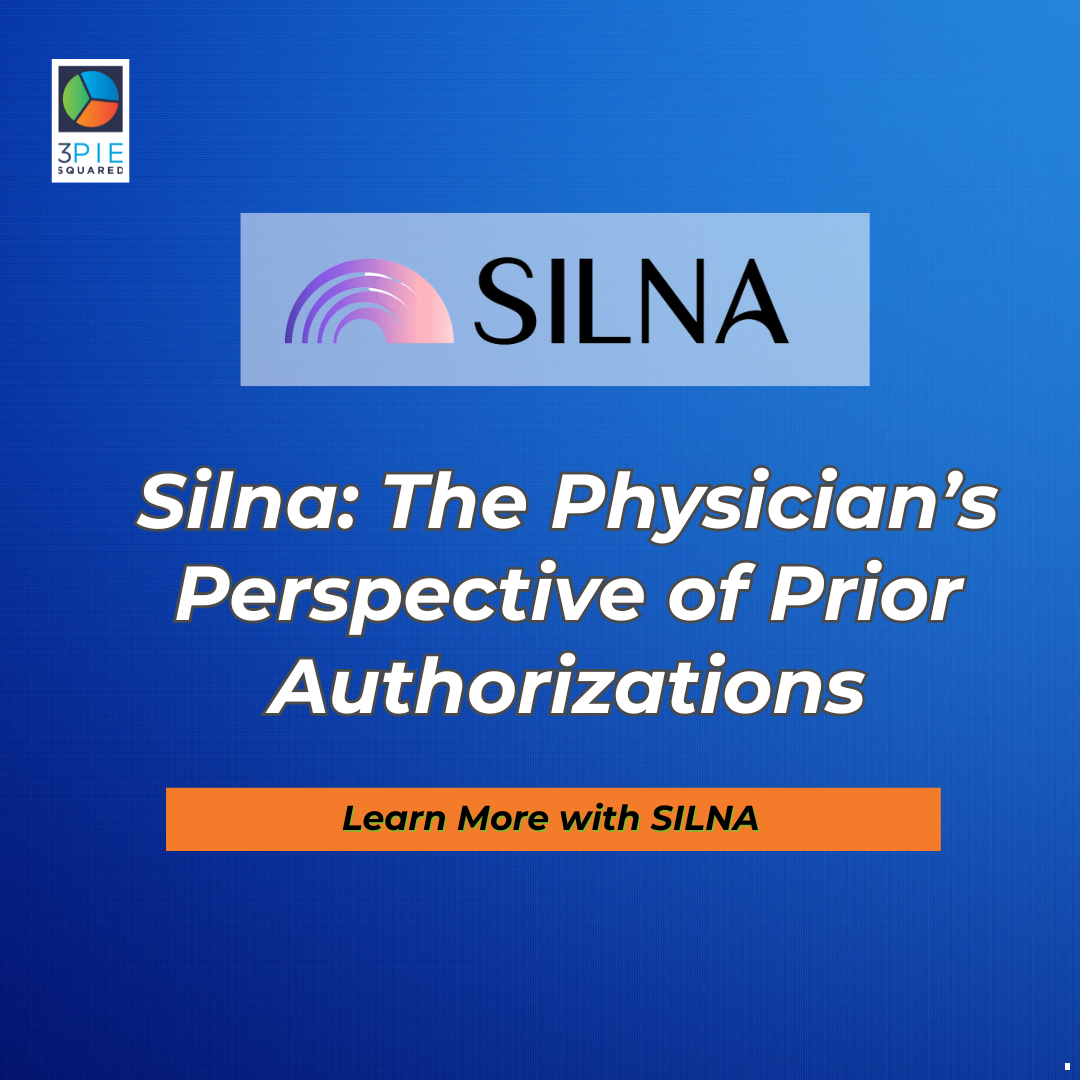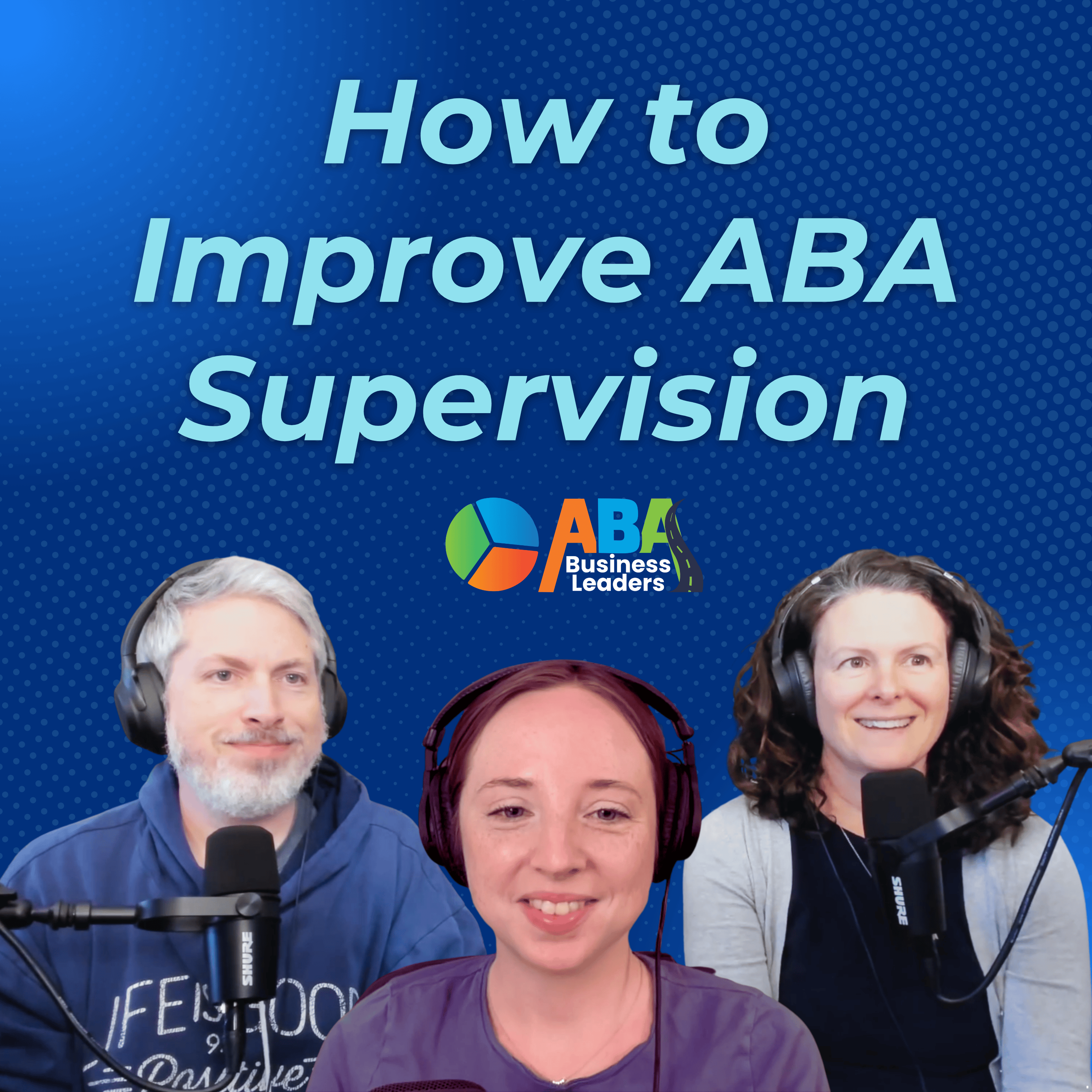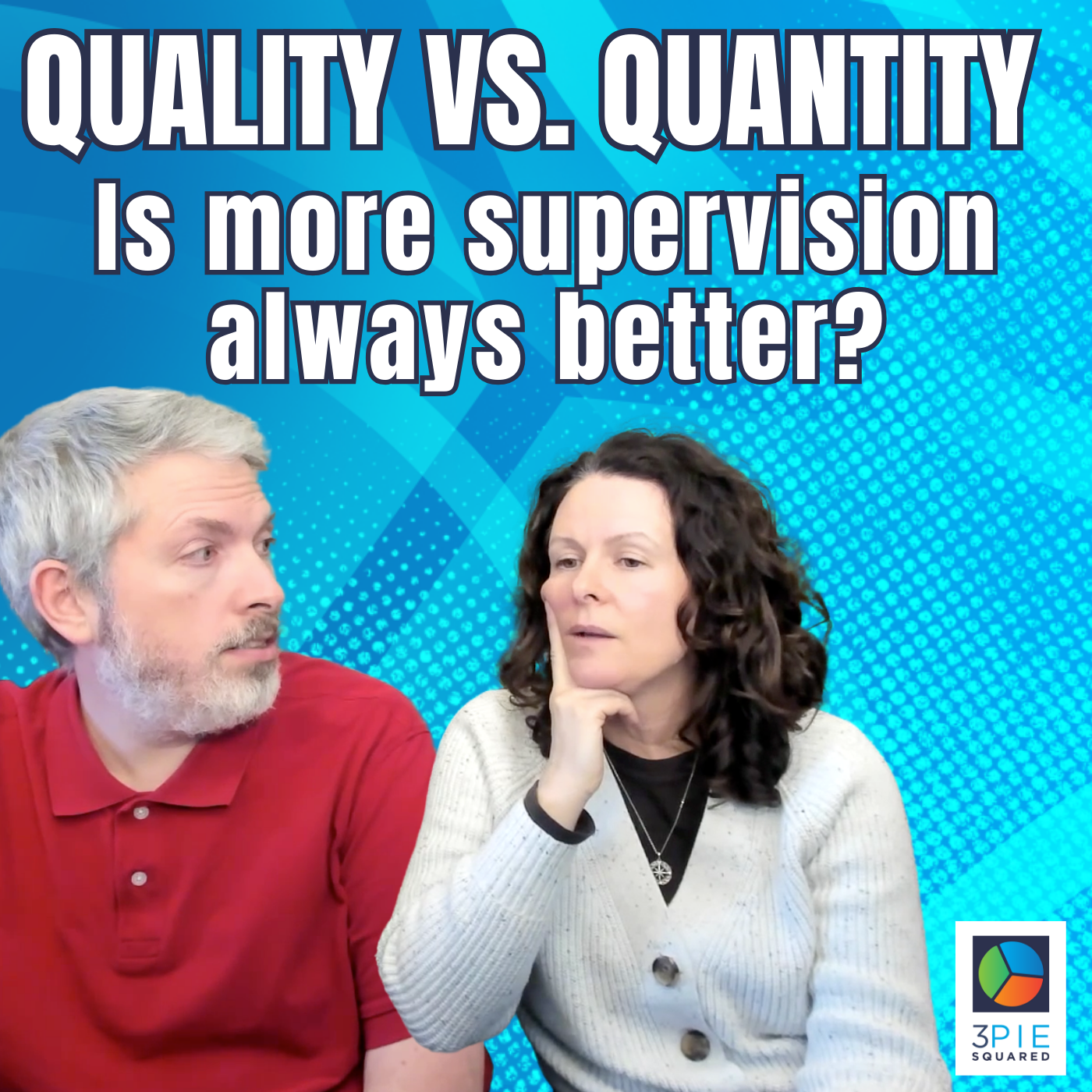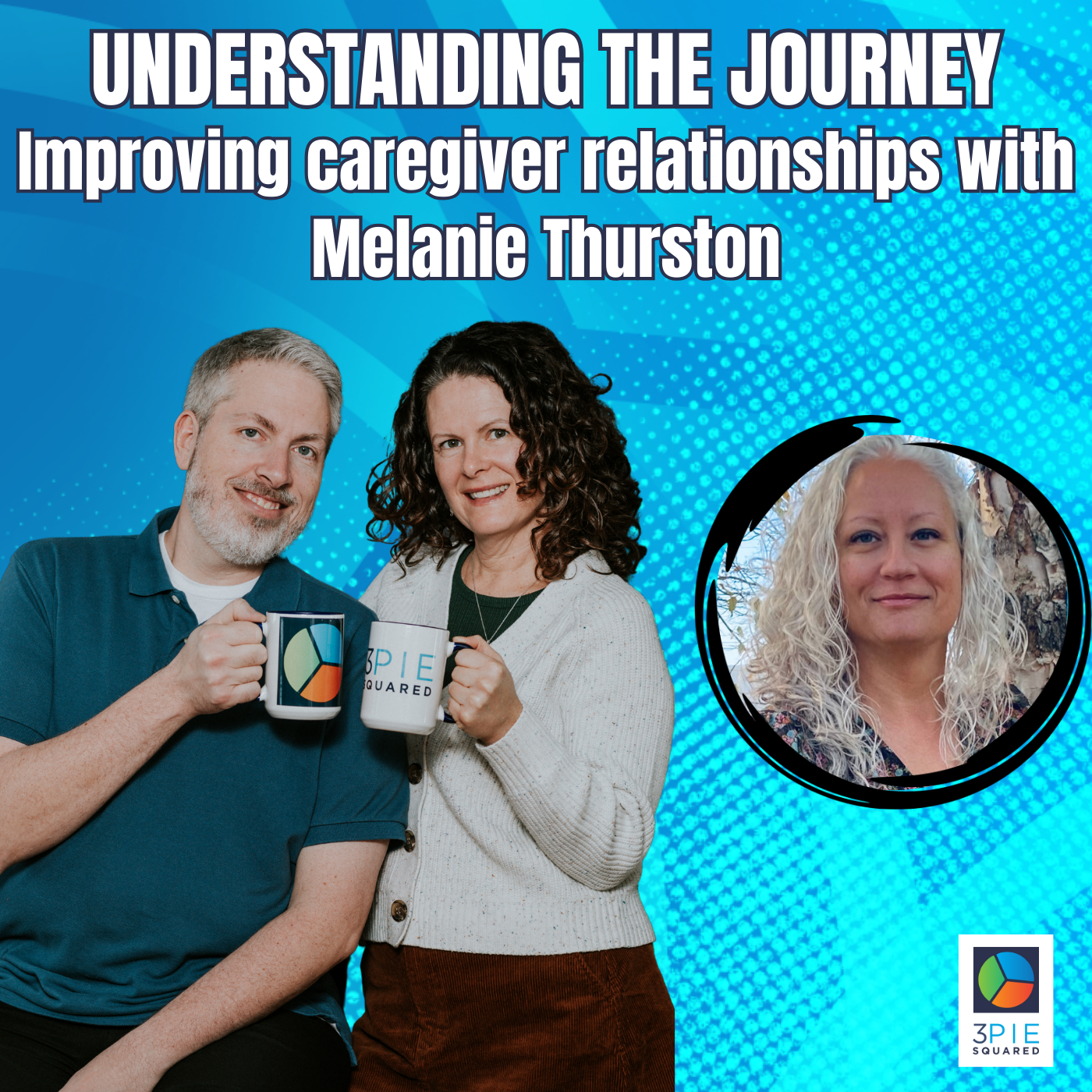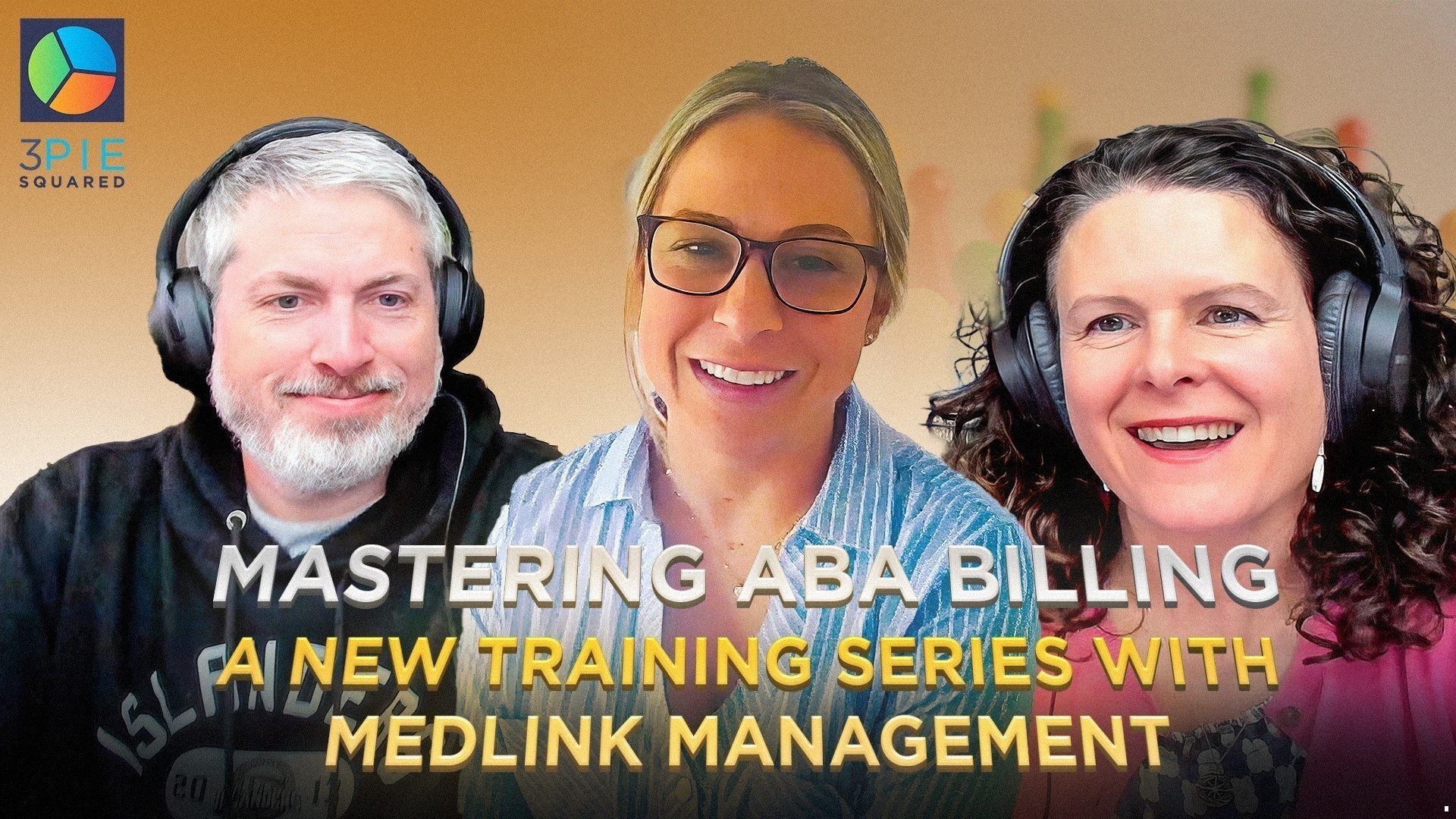If you’ve followed the rapid evolution of autism services and insurance reimbursement in the United States, you know the pace of change isn’t slowing down. ABA business owners are juggling payer audits, clinical hiring shortages, and shifting expectations from funders. But a new, $50 million federal initiative—the NIH Autism Data Science Initiative (ADSI)—could have major implications for the entire field. Whether you run a large ABA company or a small startup, this is a story you can’t afford to ignore.
This article explains what the Autism Data Science Initiative is, why NIH is investing in this work, and how it...
Check Out Our Other Articles
ABA Business News Live at 8AM: TRICARE, Publix, and the ABA Showdowns
What TRICARE’s Autism Report Means for ABA Practice Owners
Publix v. ABA Centers of America: Allegations, Out-of-Network Billing, and Lessons for ABA Practice Owners
Silna: Streamlining Insurance for ABA Businesses
ABA Mythbusting: Breaking Down Common Misconceptions
When Medicaid Moves the Goalposts: Idaho Cuts, Colorado Squeezes, and Florida’s Sunshine Health Pause
Sunshine Health’s ABA Enrollment Pause: What ABA Practice Owners Need to Know
Medicaid Cuts in Idaho and Colorado: What ABA Practice Owners Need to Know
ABA Hotline & Community Questions: Supporting Practice Owners
The QBI Deduction: What ABA Business Owners Need to Know
Navigating Team Dynamics, Ethics, and Growth in ABA: An AMA with April and Stephen
ABA News Roundup: Medicaid Payments in Florida, Ownership Rules in Illinois & New York, and New Billing Support
Illinois Joins New York in Requiring Licensed Professionals to Own ABA Practices
Florida Medicaid Crisis: ABA Providers Struggle to Get Paid
Building Resilient ABA Businesses (Part 2): Finances, Burnout, and Lessons Learned
What ABA Providers Can Learn from Medicaid Cuts and HIPAA Settlements - Join us Live at 8:00 AM
HIPAA Lessons for ABA Providers: What We Can Learn from the Deer Oaks Settlement
North Carolina Medicaid Cuts: Why ABA Providers Must Act Now
Building Resilient ABA Businesses
Cutting Through Prior Authorization Red Tape: How SILNA Helps ABA Businesses Thrive
Join Us Live: Safeguards in ABA & California AB 951
Safeguards in ABA: Why In-Home Protections Cannot Be Overlooked
California Ends Mandatory Autism Re-Diagnosis for ABA Therapy Coverage: What AB 951 Means for Families and Providers
Building ABA Teams That Thrive (Part 2): Managing ABA Business Caseloads
Partners, Profits & Peace of Mind: Why Financial Clarity Matters More Than Ever for ABA Providers
Summer’s Not Over—But We’re BACK! (Join Us Live on Facebook Monday, August 4th at 8 AM Eastern)
Colorado RBT Requirements: What ABA Providers Are Actually Saying
Nebraska Medicaid Rate Cuts: What ABA Providers and Families Need to Know
Building ABA Teams That Thrive: Structure, Support & Culture!
Would You Rather: Real ABA Leaders Tackle the Tough Choices
New Tax Law, New Opportunities: What the OBBBA Means for ABA Providers
Prior Authorization Reform Highlights a System in Crisis—Silna Has the Solution for ABA Providers
AI Meets ABA: The Future of Behaviour Analysis with Adam Ventura
Finding Your Why: The Heart of ABA Business Ownership
Looking after your RBTs, Part 2: Knowing Your Worth
Silna: The Physician’s Perspective of Prior Authorizations
This Week in ABA News - Why Ethics Matter: ABA Insurance Mandates, Broken Trust, and the Real Work Ahead
When Trust Is Broken: What Every ABA Provider Must Learn from Recent Abuse Allegations
The Real Story on ABA Insurance Mandates: When Low Rates Undercut the Promise
This Week in ABA News: Prior Authorizations Under Fire and a Wake-Up Call from Kansas Schools
When Schools Ban ABA Therapists: Lessons From Kansas, and a Wake-Up Call for ABA Providers
RFK Jr., Dr. Oz, and the End of Prior Authorizations? What ABA Owners Need to Know
Real Talk for RBTs: Advocacy, Burnout & Building a Better Workplace
The Ethical CFO: Why Financial Leadership Is Every ABA Owner’s Responsibility (Even If You’re Small)
Play Is Productive: The Hidden Power of Play in ABA Business Ownership
This Week in ABA: Policy Shifts, Data Science, and Cybersecurity— Join us LIVE at 8 AM Eastern today!
Ransomware in ABA: What It Looks Like, How to Prevent It, and Smarter Email Security
Florida’s Sweeping Autism Law: What it Means for Families, ABA Providers, and the Future of Autism Services
ABA Weekly: Lifelines, Benchmarks & Compliance—Join us Live at 8 AM Eastern
HIPAA in 2025: Why Every ABA Company Needs to Rethink Compliance—Now
The Real Benchmark: What HealthBench, AI, and ABA’s Future Mean for Kids
When Systems Fail Families, ABA Can Still Be a Lifeline
How to Improve ABA Supervision with Allyson Wharam of ‘ABA in the Field’
ABA Business Weekly: HIPAA, M&A, and Turning the Tide in Special Ed - Live at 8AM Eastern today!
HIPAA Breaches Aren’t Just a “Big Company” Problem: What ABA Businesses Need to Learn from the WellNow Settlement
Turning the Tide: How ABA Leaders Can Rebuild Trust in Special Education
Navigating the 2025 ABA M&A Surge: What Ethical Practice Owners Need to Know
Ego Driven Hiring: A Wake-Up Call for ABA Business Owners
Waiving Co-Pays and the Power of Partnership - Live New Today at 8 AM Eastern
NASQN & 3 Pie Squared Partner to Empower Ethical ABA Practice Growth
When Discounts Cross the Line: What ABA Practice Owners Need to Know About Waiving Deductibles
Clarity, Capacity, and Efficiency with Silna
Chaos, Contracts & Chatbots: What’s Really Steering ABA? - Live news today - 8 AM Eastern in Facebook
The Contract Temptation: Why Classifying BCBAs as 1099s May Be a Risk for ABA Companies
When Systems Fail Quietly: Optum, Medicare Fraud, and the ABA Fallout We Can’t Ignore
Whose Hand Is on the Wheel? What a Reddit AI Experiment Means for the Future of Clinical Judgment in ABA
Finding Joy in the Journey
Two Truths and a Wake-Up Call: Medicaid Cuts, Treatment Intensity, and the Future of ABA - Live discussion today at 8 AM Eastern
The Real Impact of Medicaid Cuts on ABA Therapy: What Providers and Families Need to Know
Quality Is a Choice: What Treatment Intensity Says About Who We Are in ABA
3 Things We Thought Would Be Easier!
Celebrating Mothers (and Everyone Else Who Deserves a Break): 50% Off the ABA Business Leaders Platform This Weekend Only!
Experts, X-Rays, and Indiana Drama: Live discussion today at 9:00 AM Eastern
Who Gets to Speak in ABA—and What Does That Say About Us?
Indiana Is Back in the News: What ABA Providers Need to Know About the State’s Latest Push for Cost Controls
How Applied Behavior Analysis Can Improve Healthcare Systems
Dealing with workplace drama!
🧩 Trends, Truths & Turning Points: What’s Shaping Autism and Behavioral Health in 2025
Arkansas Mom Releases Powerful Children’s Book on Autism and Mealtime Struggles
“What are we really doing here?”: The Push to Standardize Quality in Autism Therapy
Behavioral Health Deal Volume Up 53% in Early 2025: What This Means for ABA Practices
The Growing Gap in Autism and IDD Care: Why the Industry Must Scale Ethically and Strategically
Should a BCBA Always Own the Clinic? Maybe Not.
Staff, Tariffs, and RFK Jr.: What ABA Companies Need to Know Right Now - Live today at 8 AM Eastern!
ABA Staff Turnover Is Still Out of Control — Here’s What the Data Says
How the New Tariffs Could Impact ABA Businesses (And What You Can Do About It)
RFK Jr.’s Autism Registry Proposal: Understanding the Implications for ABA Companies
How Margin Keepers Can Help You Master Payroll & Financial Planning
Quality over Quantity- Is more supervision always better?
Denials, Audits & Billing Headaches: ABA News Roundup – April 14, 2025
Nebraska Issues New ABA Medicaid Service Definitions Amid Federal Audit Scrutiny
Concerns Grow Over Insurance Misuse of Medically Unlikely Edits (MUEs) in ABA Therapy Denials
Federal Audit Finds $56 Million in Improper Medicaid Payments for ABA Therapy in Indiana
UnitedHealthcare’s Strategy to Limit ABA Therapy Raises Alarm in the Autism Community
It’s Time to Get Real: ABA Business Owner Burnout
From Policy Shifts to Legal Hits: ABA News Roundup – April 7, 2025 - Live event today at 11AM Eastern!
Texas Recognizes QABA® for Behavior Analyst Licensure
Maryland Clinic Settles HIPAA Violations After Ransomware Attack
New York’s Proposed Medicaid Cuts Raise Concerns for Autism Services
Massachusetts Expands ABA Therapy Coverage to Children with Down Syndrome
Indiana’s Updated Medicaid Policy for ABA Therapy: What You Need to Know
Expanding to a Clinic? Do this first!
From Big Deals to Big Trouble: ABA Business News - March 31, 2025
The truth behind the client and staff cancellations
Top ABA Headlines
Local Owner Highlight- When to scale your ABA Business
Understanding the journey- Improving caregiver relationships with Melanie Thurston
How Effective Bookkeeping Ensures Payroll Stability and Helps You Retain ABA Staff
The Importance of Bookkeeping Services for ABA Business Owners
Mastering Marketing – Local Outreach Done Right
How to Scale Your ABA Business
You Just Closed Your ABA Company... Now What?
Building the Future of Small ABA Businesses – Join Us in This Mission
Red Flags in ABA Service Providers
Coaching Session- Discussing Onboarding with a New Owner
Would You Rather: Hiring in ABA
Grow your own BCBAs vs. hiring- What you need to know
Aligning Leadership with Values: Behavioral Intelligence in ABA with Dr. Paul Gavoni
ABA Accreditation: Compliance or Commitment to Quality?
AI meets clinical decision making- Using AI to improve patient outcomes- with Amanda Ralston
Comprehensive Updates to ABA Practice Handbooks: Enhanced Policies, Compliance, and ACQ Standards Integration
Leadership in ABA: Building Values, Managing Relationships, and Driving Progress with Martin Myers
Leadership, transparency, and collaboration in ABA organizations, with Jennifer Heidt
Building Better Care; Public Policy and Staff Empowerment
Free RBT Training for Your ABA Team This Holiday Season!
Innovating ABA Practice with AI Solutions
How can we help? Using ACT with Meg Solomon.
Building Resilience in ABA Practices: Lessons in Staffing, Billing, and Growth
Flash Sale: 6 Months Free Access to Our ABA Business Leaders Training Platform for 25 Companies!
I Hate My Job: Exploring Real Solutions
I Hate My Job: Reaction to Posts
I Hate My Job: Real Stories of Ethical Dilemmas in ABA
Introducing the New ABA Business Leaders Training Platform
I Hate My Job: Voicing the Frustrations of ABA Professionals
Introducing Our New Self-Paced Courses: Revenue Cycle Management & Effective Hiring with Indeed
CPABA Conference: A Path Forward for the Field - Get a 10% Discount!
Empower & Thrive: Registration Extended Until October 7 - 50% off!
Exciting New Coaching Opportunity for 3 Pie Squared ABA Business Leaders!
Free Download! Discover Essential Tax Compliance Tips with MarginKeepers
Why Stephen is Excited About the CPABA Conference 2024 - Discount just for you! -
3 Pie Squared Partners with Happy Medium RBT to Offer a Revolutionary 40-Hour RBT Training
Maximizing Recruitment with Indeed: How to Find the Right Candidates Without Breaking the Bank
Empathetic Leadership in ABA: Supporting Our Techs
Five Weeks of Wisdom: Bite-Sized Insights from 3 Pie Squared
Introducing the ABA Business Leaders Training Platform
Free Download! Boost Your Established ABA Practice with MarginKeepers' Essential Accounting Tips
Inside the World of ABA Audits and Legal Guidance with Kim Mack Rosenberg, Esq.
Ethical Practices for ABA Testimonials and Reviews with Dr. Jon Bailey
Navigating Growth and Challenges in ABA Business with Alecia Barrett
For a limited time, buy any of our handbooks and get our Business Leaders Membership for 75% off!
Collaboration in ABA: Strengthening Connections Among ABA Business Owners
"I Hate My Job" Series Kickoff: Discussing Burnout and Unethical Practices in the ABA Field
Top Five Essentials for Your Company Policies
Discount Ends Tomorrow – Last Chance to Get 20% Off Our Comprehensive ABA Billing Training Series!
Mastering Digital Marketing for ABA Practices with Reece from Reputation Elevation
Navigating ABA Business Growth: Consultation with Alecia Barrett
Unlock Your Billing Potential: Our New ABA Billing Course and Free ABA Billing Tips!
Navigating Company Policies: A Blueprint for ABA Practices
Free Chart of Accounts: Optimize Your Bookkeeping with MarginKeepers
Safeguarding Integrity: Proactive Strategies to Mitigate Billing Fraud in ABA Therapy
Steering Clear of Fraud: Mastering Insurance Billing in ABA Practice
From Overwhelm to Strategy: The Journey of an ABA Business Leader
Beyond the Startup: Common Mistakes by Seasoned ABA Business Owners
Essential Elements of an Employee Handbook for ABA Practices
Don’t Do That!: Avoiding Common Missteps in Your ABA Practice
Pre-Hire Power: The Critical Importance of an Employee Handbook for ABA Practices
Integrating Art into ABA Therapy: A Conversation with Natasha Bouchillon
Why a Client Handbook is Crucial Before Starting ABA Services
🥧 Grab a Slice of Success: Pi Day Flash Sale! 🎉
Why Should I Get a Client Handbook Before I Start Seeing Clients?
Financial Insights for ABA Practices: Free Chart of Accounts from MarginKeepers!
Navigating Authentic Copywriting in ABA Services: Insights and Innovations
Big Changes to the Podcast!
Get Free Expert Consulting for Your ABA Business on Our Podcast – Apply Now!
Navigating the Credentialing Conundrum: Insights from ABA Leaders
Navigating ADA Compliance: Essential Insights for ABA Business Owners
Nurturing Success: The Interplay Between Company and Team Dynamics
🌟 Dive Into the World of Sleep with Dr. Emily Ice: A Podcast Episode Not to Miss 🌜
A little late but our update is here!
Maximizing Your ABA Practice’s Potential: The Power of Bookkeeping with MarginKeepers
33% Off ABA Business Leaders for the Next 25 People!
Client Hours Discussion with April, Mallory Stinger, and Jennifer Helton
Improving Quality Through Accreditation: A Discussion with Erick Dubuque, Director of ACQ
Optimize Your ABA Practice with the Case Load Utilization Tool - 50% until Friday!
Black Friday Special - Rate Negotiations 2.0 - Elevating Your Practice with Provider Rate Resources
Navigating Medical Necessity with Dan and Mike from ABA on Tap
Upcoming Podcast with Erick Dubuque, Director of ACQ & Exciting News on How We Can Help Companies Navigate This New Standard! 🌟🎙️
Partnering with MarginKeepers, Co.: A Game Changer for Your ABA Practice
Celebrate Canadian Thanksgiving with a Bang: 50% Off ABA Business Leaders Membership and Earn 33.5 CEUs!
Empowering Change: Insights from New BCBA Business Owners
Founding a Nonprofit Practice with Susan Habchy
ABA Business Amazon List
De-Stress & Avoid ABA Burnout with a Relaxing Post-Work Routine
Three Common Struggles of a New ABA Practice
Benefits of Outsourcing with 3 Pie Squared
Why 3 Pie Squared
The Essential List for a Successful Business
2019 Satisfaction Survey results
The Cost of RBT Turnover
What You Need to Know About HIPAA
Podcast with Dr. Becca Tagg
Run Your Therapy Business Like a Well-Oiled Machine!
How to Grow Your Practice
could reshape everything from clinical guidelines to payer policies. Most importantly, it breaks down what ethical ABA providers need to know right now, and how you can prepare your organization for the next wave of data-driven care.
What Is the Autism Data Science Initiative?
The Autism Data Science Initiative (ADSI) is a major new funding program from the National Institutes of Health (NIH), with up to $50 million allocated in 2025 alone. The aim: to harness the power of big data, advanced analytics, and open science to accelerate progress in understanding, diagnosing, and treating autism spectrum disorder (ASD).
Unlike traditional funding for clinical trials or narrowly focused research, this initiative is about integration. The goal is to bring together vast and diverse data sets—including genetic, environmental, behavioral, clinical, and service use data—to answer big questions about what causes autism, why prevalence keeps rising, and which interventions truly make a difference for individuals across the lifespan.
Why Is NIH Doing This—And Why Now?
Here’s what’s driving this historic effort:
- Rising Prevalence, Unanswered Questions: Autism affects 1 in 31 children in the U.S. (CDC, 2025), a prevalence that’s risen almost every year since 2000. There’s still no consensus on why, but factors like genetics, environment, parental health, and diagnostic practices all play a role. The NIH wants to get to the bottom of this—not just by funding one-off studies, but by connecting the dots with advanced data science.
- Fragmented Data, Missed Opportunities: For decades, research has been siloed—one lab studies genetics, another looks at environmental exposures, a third tracks service outcomes. The ADSI aims to break down these silos, aggregating and analyzing data across disciplines to fuel true scientific breakthroughs.
- A Call for Evidence-Based Interventions: As insurance and Medicaid spending on ABA and autism services explodes, so does scrutiny. Payers, policymakers, and advocates are all demanding better answers: What works? For whom? At what intensity? And with what long-term results? The hope is that better data will lead to better answers—and ultimately, better care.
The Four Strategic Aims of the Autism Data Science Initiative
Let’s break down what NIH wants to achieve, in practical terms for ABA business owners and clinical leaders:
1. Creating New Integrated Data Resources
What this means: The NIH is funding teams to link together existing data—clinical records, genetic tests, environmental exposure info, and more—into new, privacy-protected resources that the broader research community can access. Why it matters: If you’re frustrated by constantly changing clinical guidelines or payer requirements, this is where the answers (and the next wave of rules) will come from.
2. Identifying and Filling Data Gaps
What this means: In some areas—like adult autism outcomes, mental health comorbidities, or community-based intervention results—the data just isn’t there. ADSI projects will be tasked with generating targeted new data, from biospecimens to parent surveys to service utilization studies. Why it matters: If you’re running an ABA practice and struggling to prove your model’s effectiveness, better national data will ultimately help set the standard.
3. Analyzing Integrated Data to Find Patterns and Predictors
What this means: By using AI, machine learning, and advanced statistics, researchers will look for new connections—what factors predict autism, what predicts treatment response, and what service patterns yield the best long-term outcomes. Why it matters: Payers will use these findings to set policy. Clinical leaders can use them to train staff and justify service models. And ethical business owners can use them to differentiate from competitors cutting corners.
4. Independent Replication and Model Validation
What this means: Every major finding will need to be replicated by independent teams, ensuring transparency, reliability, and reproducibility. Why it matters: This is a direct response to ongoing concerns about “junk science” or studies that can’t be repeated. For ABA business owners, it means new evidence will have real staying power—and can be used with confidence in payer negotiations and care plans.
How Will This Affect ABA Practices?
The implications of the ADSI are huge—and will play out over the next five years and beyond.
- Data-Driven Clinical Guidelines: Expect insurers, Medicaid, and even state governments to start referencing findings from these NIH-funded projects in their requirements for authorizations, treatment dosages, and outcome reporting. The days of “every child gets 40 hours” are numbered—what works (and gets reimbursed) will increasingly be defined by national data.
- Benchmarking and Accreditation: As more data is aggregated, it will become possible to benchmark your clinic’s outcomes, hours, and practices against national norms. Practices pursuing accreditation—especially those aiming to sell or grow—will be able to leverage this data to demonstrate quality, justify rate negotiations, and attract buyers.
- Transparency and Accountability: This initiative will push the entire ABA industry toward greater transparency—what you do, why you do it, and what results you achieve. Clinics that are already operating with clear policies, open communication, and evidence-based care will thrive; those relying on outdated models or “pencil paper” documentation will struggle.
What Should Ethical ABA Business Owners Do Now?
Here are actionable steps every ABA business owner and clinical leader should consider:
- Get Familiar with Data Integration: Start understanding how your clinic’s data—clinical outcomes, billing, client demographics—can fit into larger efforts. Consider how you’d answer questions about your own service intensity, outcomes, or client mix.
- Update Your Policies: If you don’t already have a robust data management and privacy policy, now’s the time. NIH-funded initiatives operate with strict privacy, compliance, and transparency standards—and your clinic will be expected to do the same as payer requirements evolve.
- Invest in Accreditation: Accreditation (from organizations like BHCOE or ACQ) is no longer just a “nice to have.” It’s increasingly the gold standard for demonstrating your practice meets the benchmarks set by national research and payer guidelines—especially if you plan to sell or expand in the next few years.
- Focus on Outcomes and Quality: Make sure your clinical leadership is tracking real outcomes—not just billing hours. National benchmarking is coming. The clinics that can show measurable progress for clients, especially in areas prioritized by NIH (functional outcomes, mental health, family satisfaction), will be ahead of the curve.
- Stay Engaged with the Field: This is the time to read, network, and participate in the wider ABA and autism research community. Join webinars, listen to the ABA Business Podcast, and talk with your team about what these changes mean for your clinic’s mission and future.
Final Thoughts
The Autism Data Science Initiative isn’t just another government grant. It’s a sign that the field is maturing—and that the days of disconnected, anecdotal, or one-size-fits-all care are coming to an end. For ethical ABA business owners, directors, and clinical leaders, this is a unique opportunity. By focusing on transparency, accreditation, and a culture of evidence-based care, your practice can thrive as the field moves into its next chapter.
Resources and Sources
Need help with your ABA business?
Whether you need help with ABA handbooks, HIPAA compliance, billing, or knowing if your ABA business is ready to scale, we’ve built resources for you. Access free checklists, readiness assessments, expert consultations, and tools to keep your practice ethical, efficient, and ahead of the curve.


































